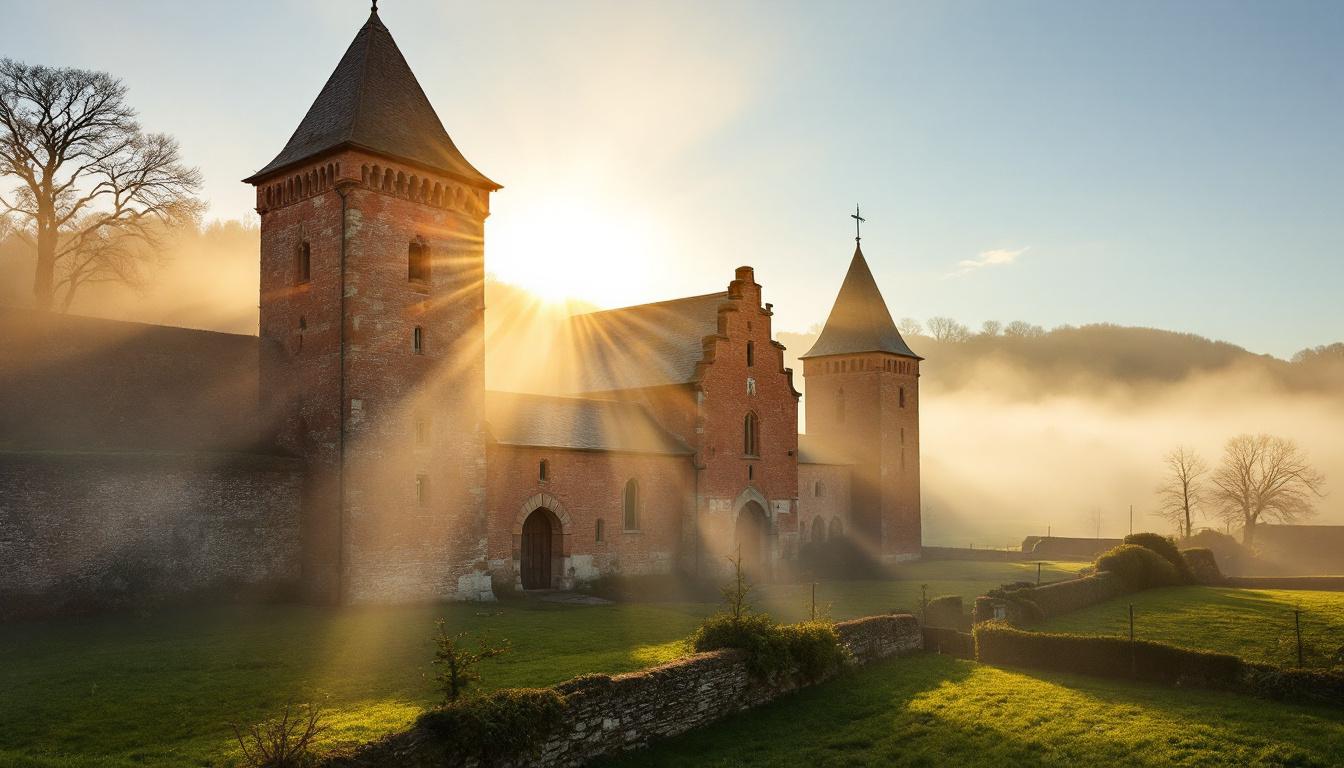In a remote corner of northeastern France, just 44 kilometers from larger towns like Laon, lies a village so remarkable it earned France’s coveted “Most Beautiful Villages” designation. Parfondeval stands as the only village in Aisne to receive this honor, yet remains delightfully under-visited compared to France’s more celebrated destinations.
A fortress church that protected an entire community
Parfondeval’s crown jewel is the 16th-century fortified Church of Saint-Médard, built during the reigns of Louis XIII and Louis XIV. Unlike typical places of worship, this church served a dual purpose—spiritual center and community fortress.
“Our church tells the story of dangerous times when villagers needed protection from marauding bandits,” explains local historian Marie Leclerc. “The thick walls, defensive towers, and even latrines inside show people could shelter here for days during attacks.”
What makes this fortified church exceptional is its immersive experience. Inside, multilingual displays, sound installations, and projections bring the building’s fascinating history to life—a level of interpretation rarely found in rural France.
A village frozen in architectural harmony
Strolling through Parfondeval feels like stepping into a perfectly preserved rural tableau. The village’s homes share a distinctive architectural style—red brick walls topped with steep slate roofs—creating a harmonious visual effect against the rolling green Thiérache countryside.
Unlike other medieval villages in France that attract crowds, Parfondeval’s tranquility remains intact, offering visitors an authentic glimpse into rural French heritage.
Hidden treasures beyond the church
While the fortress church deservedly captures attention, Parfondeval holds other secrets worth discovering. A small agricultural museum displays tools from past centuries, offering insights into the region’s farming traditions. Nearby, a traditional washhouse and mill complete the picture of historic rural life.
These modest attractions might seem simple compared to the grand inspirations behind Monet’s masterpieces, but they provide an authentic window into centuries of French country living.
The greater Thiérache region: A historical treasure hunt
Parfondeval serves as an excellent starting point for exploring the fascinating Thiérache region, known for its collection of fortified churches. Each one tells a unique story of how rural communities protected themselves during turbulent times.
“The Thiérache fortified churches represent a remarkable chapter in European defensive architecture,” notes architectural historian Pierre Dubois. “What makes them special is how they blend religious purpose with practical protection for entire villages.”
Outdoor adventures in unspoiled countryside
The landscapes surrounding Parfondeval offer exceptional opportunities for hikers and cyclists. Miles of greenways, including paths along disused railway lines, wind through gentle hills and past historic infrastructure like old railway bridges.
Unlike more dramatic landscapes that have shaped scientific understanding, Thiérache’s beauty lies in its subtle, pastoral charm.
Immersive accommodation in traditional settings
Staying in Parfondeval means embracing rural authenticity. Vacation rentals in traditional brick homes allow visitors to experience village life firsthand, while nearby restaurants serve regional specialties featuring local ingredients like Maroilles cheese and Thiérache cider.
The experience feels worlds away from Corsica’s pink granite villages or high-altitude sacred lakes, yet offers its own profound connection to place and history.
Photography opportunities for the discerning eye
For photographers, Parfondeval offers exceptional opportunities, especially during golden hour when warm light transforms the red brick buildings. The fortified church, with its imposing silhouette against morning mist or evening sky, creates particularly striking images.
Parfondeval doesn’t shout for attention with dramatic landscapes or monumental architecture. Instead, it whispers stories of resilience, community, and rural tradition—inviting travelers willing to look beyond France’s famous destinations to discover authentic treasures hiding in plain sight.
